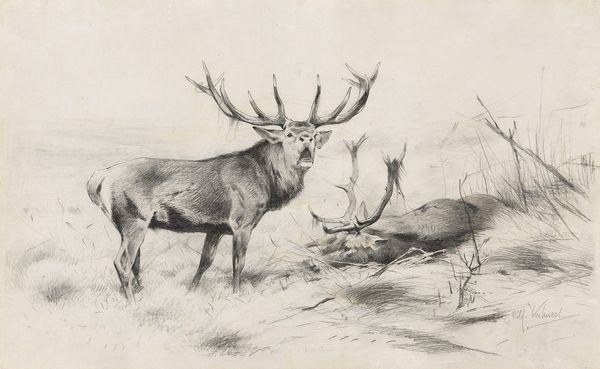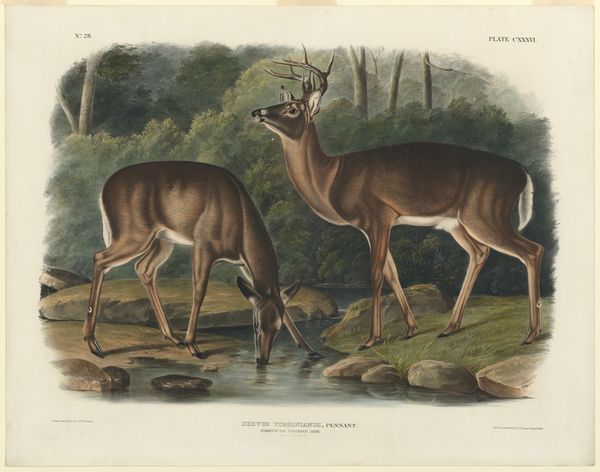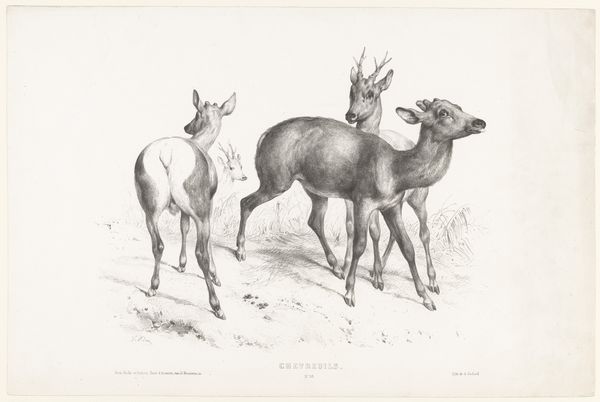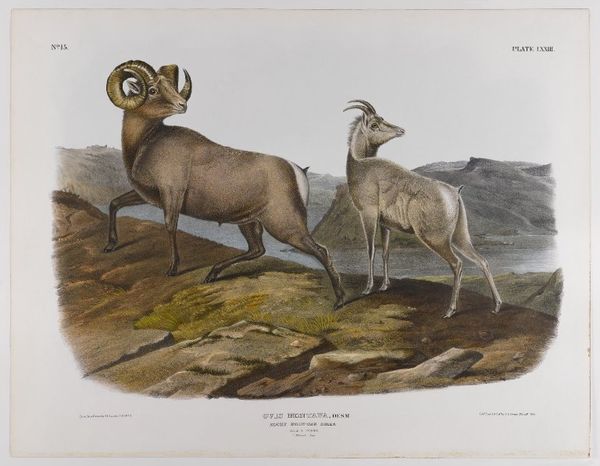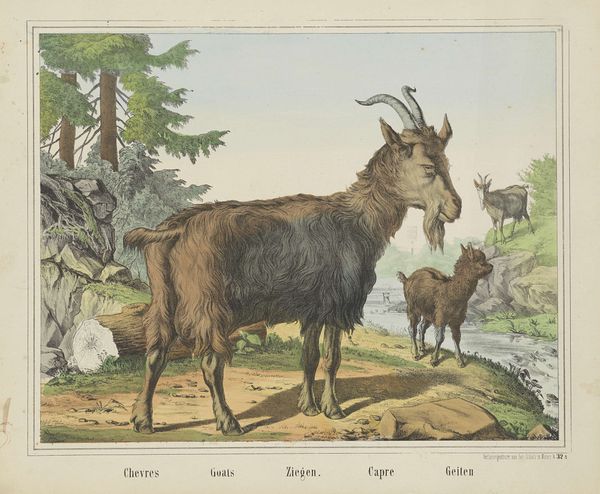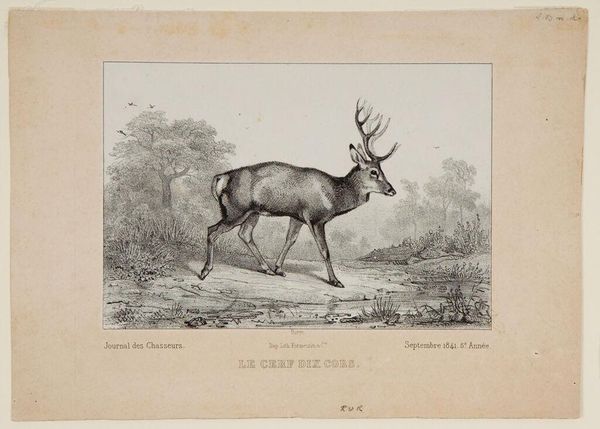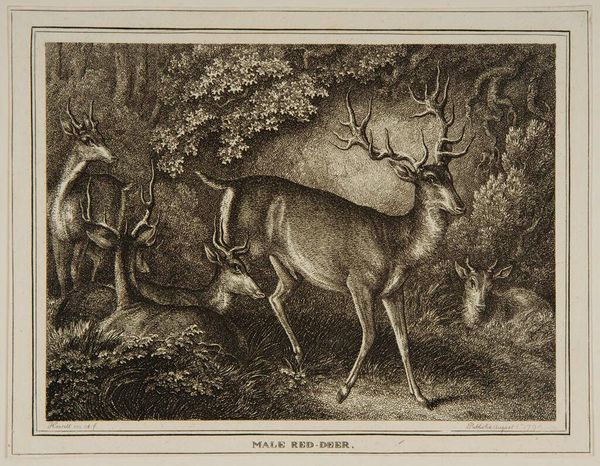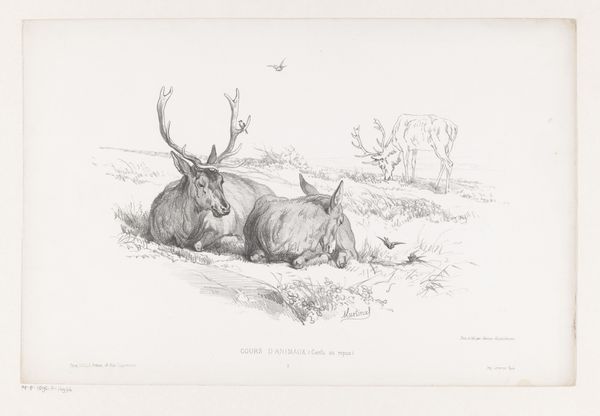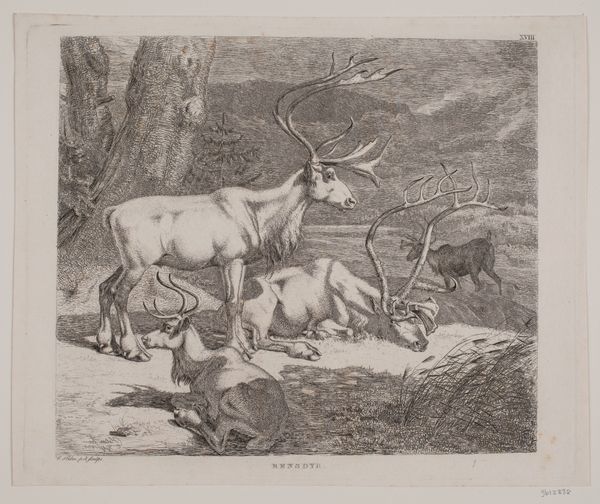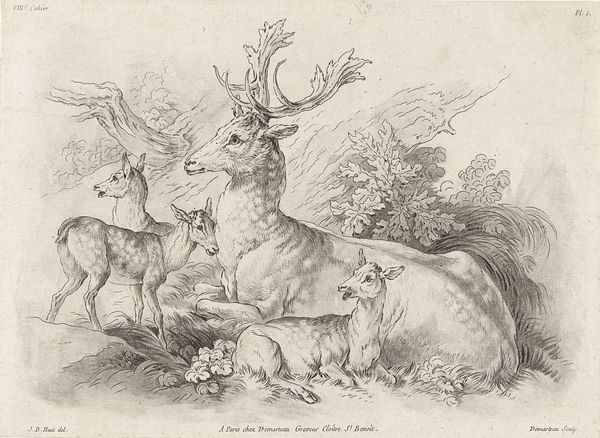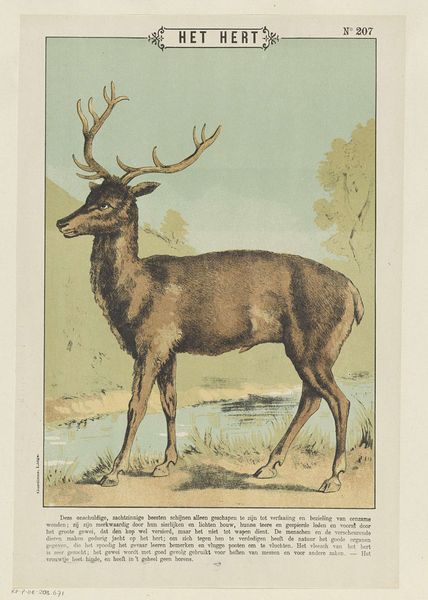
watercolor
#
landscape
#
watercolor
#
animal portrait
#
hudson-river-school
#
watercolour illustration
#
naturalism
#
watercolor
Copyright: Public domain
Editor: Here we have John James Audubon's "American Elk," created around 1845, using watercolor. The detail is just incredible. What do you make of the way Audubon chose to depict these animals in this era? Curator: Audubon's work existed at a pivotal time in America. It was an era of expansion westward, and also increased industrialization. His art, particularly "American Elk," then, presents us with an idealized, romanticized view of the natural world, even as that world was quickly disappearing due to human impact. Consider its display; who do you think would've viewed this painting, and in what context? Editor: I suppose people back east, maybe? Who might have been nostalgic for nature they had only read about, rather than experienced firsthand. So this work sort of plays into that yearning for an untouched America? Curator: Exactly! His meticulous rendering served a dual purpose. Yes, there's a scientific accuracy, a detailed record of species but, at the same time, it reinforces this romantic notion of wilderness being both majestic and, crucially, *separate* from human concerns. The very act of framing the elk, naming them “American Elk,” subtly stakes a claim of ownership, doesn’t it? Editor: That’s an interesting point. Like taming nature just by depicting it? So the painting itself becomes a political act, even if it doesn’t seem like it at first glance? Curator: Precisely! And don’t forget, Audubon published these images in a grand scale. The size itself becomes a statement of the American project itself: grandiose and all-encompassing. It makes you think about the role of institutions, like museums, then. How do *we* display nature now, and what narrative does that support? Editor: Wow, I never really thought of Audubon that way. It’s fascinating to see how this seemingly simple painting reflects a much larger, complex narrative of America’s relationship with nature and its own identity. Curator: It is, indeed, an invitation to consider how even seemingly objective depictions can carry significant socio-political weight, isn’t it?
Comments
No comments
Be the first to comment and join the conversation on the ultimate creative platform.

